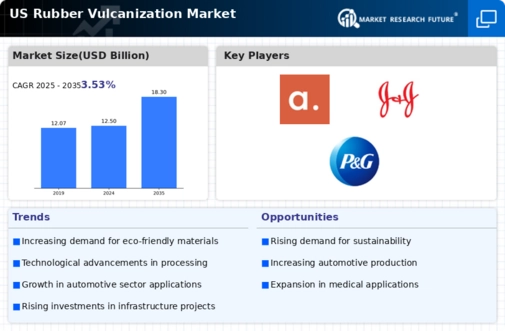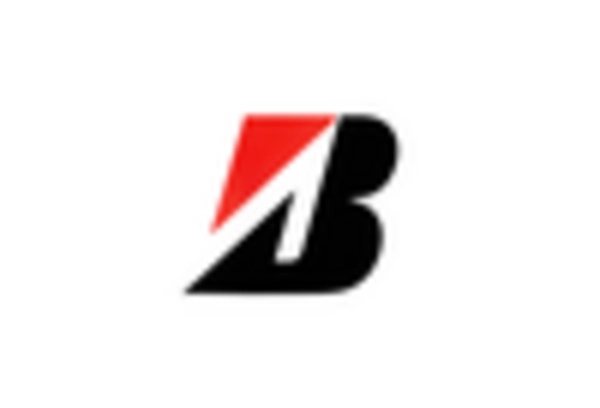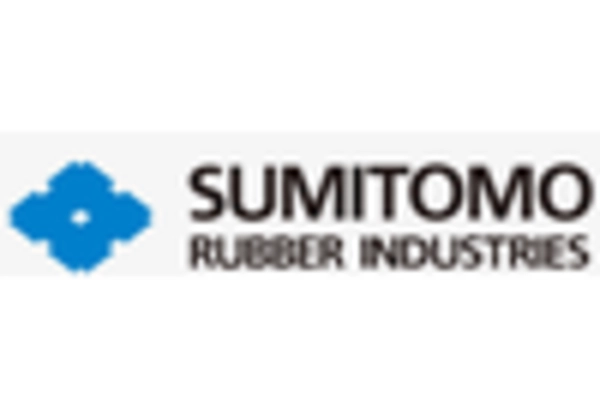Growing Automotive Sector
the automotive sector in the US is experiencing robust growth, which is likely to drive demand for rubber products.. As vehicle production increases, the need for high-performance rubber components, such as tires and seals, becomes more pronounced. In 2025, the automotive industry is projected to generate approximately $1 trillion in revenue, with a significant portion allocated to rubber products. This growth is attributed to rising consumer preferences for durable and efficient vehicles, which necessitate advanced rubber materials. Consequently, manufacturers in the rubber vulcanization market are expected to innovate and enhance their offerings to meet the evolving demands of the automotive sector.
Rising Demand for Consumer Goods
The increasing demand for consumer goods in the US is expected to positively impact the rubber vulcanization market. As disposable incomes rise, consumers are more inclined to purchase products that incorporate rubber components, such as household appliances and sporting goods. The consumer goods sector is projected to grow at a CAGR of 4% through 2025, further driving the need for durable rubber materials. This trend suggests that manufacturers in the rubber vulcanization market may need to adapt their production processes to cater to the evolving preferences of consumers, thereby enhancing their market position.
Infrastructure Development Initiatives
Infrastructure development initiatives in the US are anticipated to bolster the rubber vulcanization market. The government has committed substantial funding towards upgrading transportation networks, including roads and bridges, which often require high-quality rubber materials for various applications. In 2025, the federal budget for infrastructure is projected to exceed $200 billion, creating a favorable environment for rubber manufacturers. This investment is likely to increase the demand for rubber products, such as expansion joints and seals, which are essential for maintaining structural integrity. As a result, the rubber vulcanization market is poised to benefit from these initiatives, leading to potential growth opportunities.
Environmental Regulations and Compliance
Environmental regulations and compliance requirements are becoming increasingly stringent in the US, influencing the rubber vulcanization market. Manufacturers are now required to adhere to regulations that promote sustainable practices and reduce environmental impact. This shift is prompting companies to invest in eco-friendly materials and processes, which may lead to the development of innovative rubber products. In 2025, it is estimated that compliance costs could account for up to 5% of total production expenses in the rubber industry. As a result, the rubber vulcanization market may witness a transformation as companies strive to meet these regulatory demands while maintaining profitability.
Technological Innovations in Manufacturing
Technological innovations in manufacturing processes are likely to play a crucial role in shaping the rubber vulcanization market. Advancements in automation and material science are enabling manufacturers to produce higher quality rubber products with improved efficiency. For instance, the adoption of advanced mixing and curing technologies can enhance the properties of vulcanized rubber, making it more suitable for various applications. As the market evolves, companies that invest in these technologies may gain a competitive edge, potentially leading to increased market share and profitability in the rubber vulcanization market.

















Leave a Comment